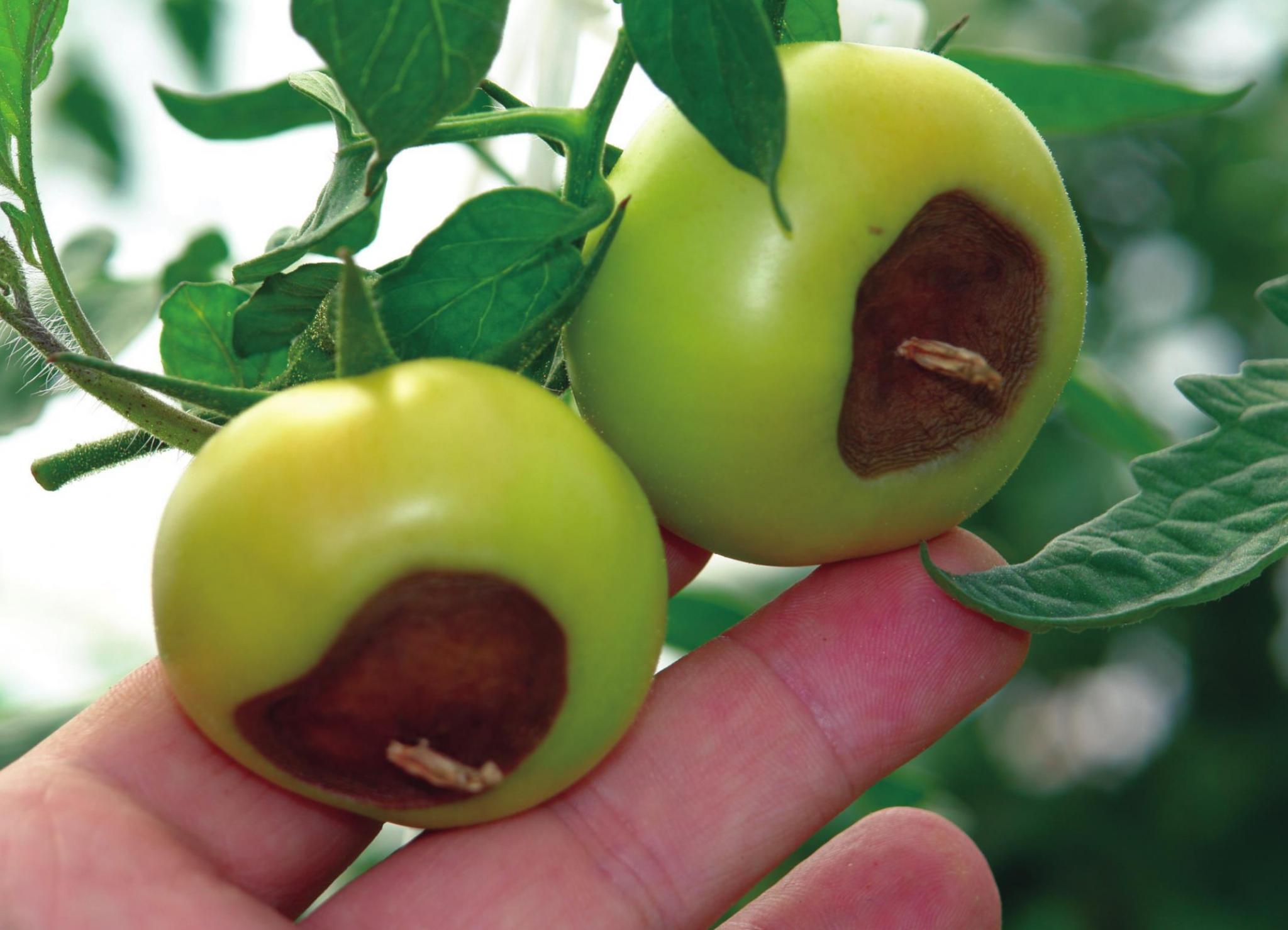

Summer heat can make it difficult for the plants to thrive in the garden. Tomatoes need sunshine and warm temperatures to grow but temperatures above 95 degrees Fahrenheit paired with inconsistent watering can cause tomatoes to drop blossoms, stop developing fruit, and blossom-end rot (pictured above). Public domain photo
Growth in Gardening: Gardening in the heat
Summer is here despite what the calendar says. Central Texans are no strangers to the heat and once we start reaching triple digits, I figure summer — in the garden at least — is here.
Not only does summer’s heat affect our comfort but it can be difficult for the plants in your garden too. For example, tomatoes need sunshine and warm temperatures to grow but temperatures above 95 degrees or intense sun can stress most varieties of the plants. Heat-stressed tomatoes drop blossoms, fruit stops developing, and the leaves may even turn dry and brittle as the heat leads to moisture stress. Thankfully, there are several things you can do to help your tomatoes and the rest of your garden weather the heat of a Texas summer.
First off, water plants deeply. Plants need water to get through summer but not every day, frequent, shallow watering can do more harm than good. Plants need to be irrigated deeply. A deep watering encourages roots to stretch deeper finding cooler soil that stays moist longer. It also helps to prevent the natural salts present in our soils and water from accumulating around the root zone. Shallow watering often leads to salt-buildup, which is evident by a white powdery substance on the soil surface.
The next thing you can do is to provide shade for sun-sensitive plants. When we think of shade, a lovely shade tree often comes to mind. However, dense shade can make it difficult for many different types of plants to grow. Filtered or dappled shade is best because it lets in enough sunlight to allow a large variety of plants to grow underneath their branches. Mesquite trees are good at providing dapple shade. You might not need to plant a tree though, sometimes, plants need temporary shade during the summer months. This includes tomato plants as well as some succulents. Shade cloth is a great tool to help provide plants with temporary shade.
Of course, if you have read my writings for a while, you know I am going to include mulching as a suggestion. Add mulch around the root zone of plants, there is so much to love about the benefits of adding mulch to your garden. For the summer garden, in particular, mulch keeps soil from drying out too quickly while reducing soil temperatures. Another desirable effect is that it reduces weeds.
There are two types of mulch — organic, which is made up of materials such as bark, and mineral mulches like crushed stone or landscape rock. Both have the same benefits as described earlier. However, organic mulches improve the soil as they decompose, releasing nutrients.
An application of mulch before temperatures rise can prevent many heat-related tomato problems. Applying mulch even after heat damage occurs can still help the plants regain their health. A 2-4 inch layer of straw or bark mulch helps trap soil moisture, which prevents the soil from drying out too quickly. The mulch also reflects some of the intense sun rays, so the soil does not heat up as much. Straw and bark mulches still allow moisture to seep through from irrigation, so there are no special watering concerns. One caution when using organic mulches is to keep the mulch 4 inches away from the base of trees or woody shrubs. Not doing so can promote the growth of harmful fungal diseases or the presence of undesirable insects.
Now, back to watering, it is best to water early in the morning. Just as the depth of watering is essential, so is the time of day when plants are irrigated. Drive down any neighborhood in the middle of summer and you will undoubtedly see sprinklers running in the middle of the day. So, why does the time of day matter when irrigating plants?
Remember that summer days are stressful for plants. The sun causes plants to lose water through their leaves and plants use all their resources to deal with the stresses that the heat brings. As a consequence, they don’t have resources available to take up water. So, watering at this time just wastes the water as the plants cannot effectively absorb it. Plus, some studies have shown that when using a sprinkler midday, up to 50% of the water is immediately lost to the atmosphere on a sunny day and does not benefit the lawn or garden at all.
It is best to water plants early in the morning throughout the year, but especially in summer. This allows plants to take up the water when they have resources available to do so.
Fruit damage sometimes occurs when tomatoes do not receive consistent moisture during their growth. Try to keep the top 6 inches of soil moist throughout the intense heat so the fruit does not crack once it resumes development. Consistent soil moisture also helps prevent blossom end rot. Deep watering, which moistens at least the top 6 inches of soil, is preferable over daily light irrigation. Water deeply one to three times a week, as needed, to maintain even soil moisture and prevent the worst damage.
Another great idea is to garden using native or adapted plants that thrive in the heat. One of the easiest ways to have a garden that can weather the extreme heat of a Texas summer is to select plants that can handle it from the getgo. There are a surprisingly large number of plants or varieties of plants that can thrive in hot temperatures. What often causes problems is when people try to grow plants that are ill-suited to hot, dry summers and must coddle them through the summer months.
A few additional things to keep in mind specifically for herbs and tomatoes are pruning and growth management. Pruning first, if many tomato leaves dry out and die during the heat you may need to lightly prune the plant once temperatures begin to cool a bit. Leave the dead foliage on the plant until the heat begins to subside, as the dead leaves can still shade developing fruit and minimize solar damage. Once temperatures cool, trim off any completely dead and brittle leaves and remove them from the bed.
Heat affects herbs too, especially flowering which takes extra energy from herbs. You can help your herbs survive heat and drought by harvesting, especially before they flower. If you don’t need to harvest, trim flowers off to save energy and help retain the herb’s flavor. Or, if you have more than one plant, try to alternate among them so some flower for pollinators and ornamental interest while others are pruned and easy to harvest.
As for tomato growth management keep in mind that heavy fruit or leaf growth following heat and sun damage can stress the tomato plant and prevent recovery. If your plants show signs that they are stressed, harvest any fruits that are full size and beginning to change color. Allow these to ripen indoors. You can leave completely unripened green fruit on the plant. Avoid any fertilizer applications until after temperatures cool and the plant begins to put on new growth. Fertilizing too soon causes heavy growth that only stresses a recovering plant all the more.
Having an attractive garden that looks great all summer long with little fuss is possible if you follow these tips.
Joe Urbach is the publisher of GardeningAustin.com and the Phytonutrient Blog. He has lived in the Central Texas area for over 30 years.











